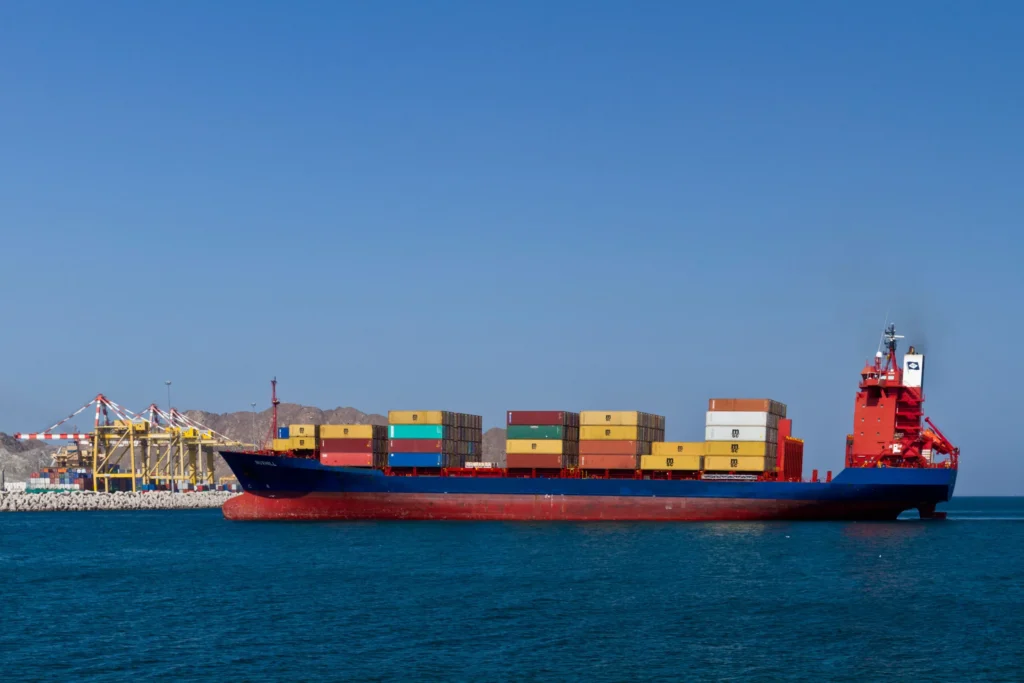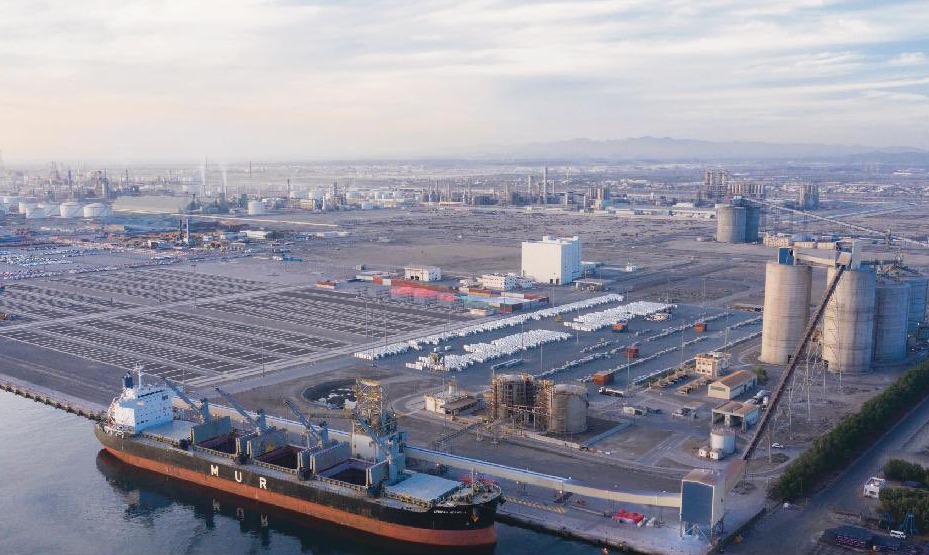Oman port investment is making global headlines as the Sultanate announces a bold $200 million upgrade to Sohar Port, aiming to cement its position as a Gulf leader in re-export trade. With global shipping routes shifting and logistics demand surging, this strategic investment underscores Oman’s growing ambitions to compete with regional heavyweights like the UAE and Saudi Arabia.
Here’s how the move could change the trade map of the Gulf.
Sohar Port Gets a $200M Upgrade
The heart of Oman’s port investment is Sohar Port, already one of the fastest-growing seaports in the Middle East. The $200 million injection will fund the construction of new container berths, expand cargo handling capacity, and implement advanced digital logistics systems.

The development is a joint initiative between the Omani government and Sohar Industrial Port Company, a 50:50 venture between the Port of Rotterdam and ASYAD Group, Oman’s state-owned logistics firm.
According to officials, the investment will increase the port’s annual container capacity from 2.4 million TEUs (twenty-foot equivalent units) to over 3.5 million TEUs by 2028.

“This expansion will not only increase efficiency but also attract global logistics players seeking alternative routes that bypass congested Gulf hubs,” said Ahmed Al Shanfari, CEO of ASYAD Ports.
Why Oman Is Betting Big on Re-Exports
Re-exporting — the process of importing goods and then exporting them again without significant modification — is a fast-growing business in the Gulf. With global supply chains being redefined post-pandemic and amid Red Sea security issues, Oman is positioning itself as a reliable and politically stable trade corridor.
Unlike some of its neighbors, Oman offers:
- Direct access to the Arabian Sea, bypassing the Strait of Hormuz
- A stable political climate and neutral diplomatic stance
- Proximity to Asia, Africa, and the Indian subcontinent
“Re-exporting is not just about shipping containers,” noted logistics analyst Fatima Al Khalidi. “It’s about control of trade flow, and Oman’s investment in Sohar Port gives it leverage to become a central link in East-West logistics.”
Oman Port Investment to Attract Global Businesses

One of the primary goals of this investment is to woo international companies looking for re-export bases. Oman is introducing competitive tariffs, customs waivers, and streamlined licensing processes at Sohar Freezone to incentivize global firms.
Major industry players like Maersk and DP World have already shown interest in expanding operations in Oman, especially for re-export of electronics, automotive parts, and FMCG (fast-moving consumer goods).
The port’s new high-tech infrastructure will also include:
- Smart customs clearance systems
- AI-based cargo tracking
- Blockchain-enabled supply chain transparency
With these upgrades, shipping times are expected to drop by up to 30%, while port congestion will be significantly reduced compared to rivals like Dubai’s Jebel Ali.
Strategic Infrastructure Links to Air and Land
Oman’s port investment strategy isn’t isolated — it’s part of a broader logistics vision. The country is rapidly expanding inland logistics corridors that connect Sohar to other key trade nodes:
- The Oman Rail Network (currently under construction) will connect Sohar Port to the UAE border and beyond.
- A new dry port in Khazaen is being developed as an inland customs and warehousing hub.
- The Muscat International Airport expansion aligns air cargo with seaport trade.
This integrated logistics system will allow faster multi-modal re-export routes, reducing transit costs and enhancing Oman’s competitiveness in the region.
Local Economy Set to Benefit
Beyond its strategic trade goals, the Oman port investment is expected to significantly benefit the domestic economy. The Sohar expansion is set to create over 1,800 direct and indirect jobs, from dock workers and crane operators to IT specialists and customs agents.
Additionally, SMEs and local contractors are being offered favorable bidding terms to support construction and service operations.
“The economic multiplier effect will be felt across logistics, transport, manufacturing, and even retail,” said Salim Al Riyami, a senior economist with the Central Bank of Oman. “It’s a smart move to stimulate non-oil GDP growth.”
Oman vs. Regional Rivals: The New Logistics Race
With this latest Oman port investment, the Gulf logistics competition is heating up. Here’s how Oman now stacks up against its regional peers:
| Country | Major Port | 2025 Capacity (TEUs) | Strategic Advantage |
|---|---|---|---|
| Oman | Sohar | 3.5M | Arabian Sea access, political neutrality |
| UAE | Jebel Ali (Dubai) | 22.4M | Largest capacity, regional dominance |
| Saudi Arabia | King Abdullah Port | 5M | Vision 2030, major funding, Red Sea access |
While the UAE remains the dominant player, Oman’s niche is clear: speed, neutrality, and efficient re-exporting.
Re-Export Growth: The Long-Term Vision
Oman aims to grow its non-oil exports to over $12 billion annually by 2030, up from around $6 billion today. Re-exporting is seen as the primary mechanism to achieve this target.
ASYAD Group forecasts that Sohar’s re-export traffic will grow by 60% within five years. Export destinations will include:
- East Africa (via Salalah transshipments)
- India and South Asia
- Europe (via Red Sea and Suez connections)
- Central Asia (via road and rail through UAE)
Green Ports and Future Sustainability
In line with Oman Vision 2040, the Sohar Port expansion also includes green initiatives:
- Solar-powered cranes and lighting systems
- Shore power stations to reduce emissions from docked vessels
- Water recycling and stormwater harvesting systems
“Oman’s port investment also aims to create a model for eco-friendly logistics in the region,” said Yasmeen Al Hadhrami, sustainability advisor at Sohar Industrial Port Company.

Final Thoughts: Oman’s Smart Logistics Bet
Oman’s $200 million port investment isn’t just a bet on trade — it’s a strategic play for influence in the logistics world. As trade routes shift and global supply chains become more fragmented, Oman is offering stability, connectivity, and speed.
The move positions the Sultanate not only as a facilitator of trade but also as a player shaping the future of global commerce.
With strong government backing, growing foreign interest, and a commitment to green growth, Sohar Port could very well become the Gulf’s next big logistics success story.
Read More: IndiGo Expands UAE to Kerala Flights in 2025—Full Details Inside














